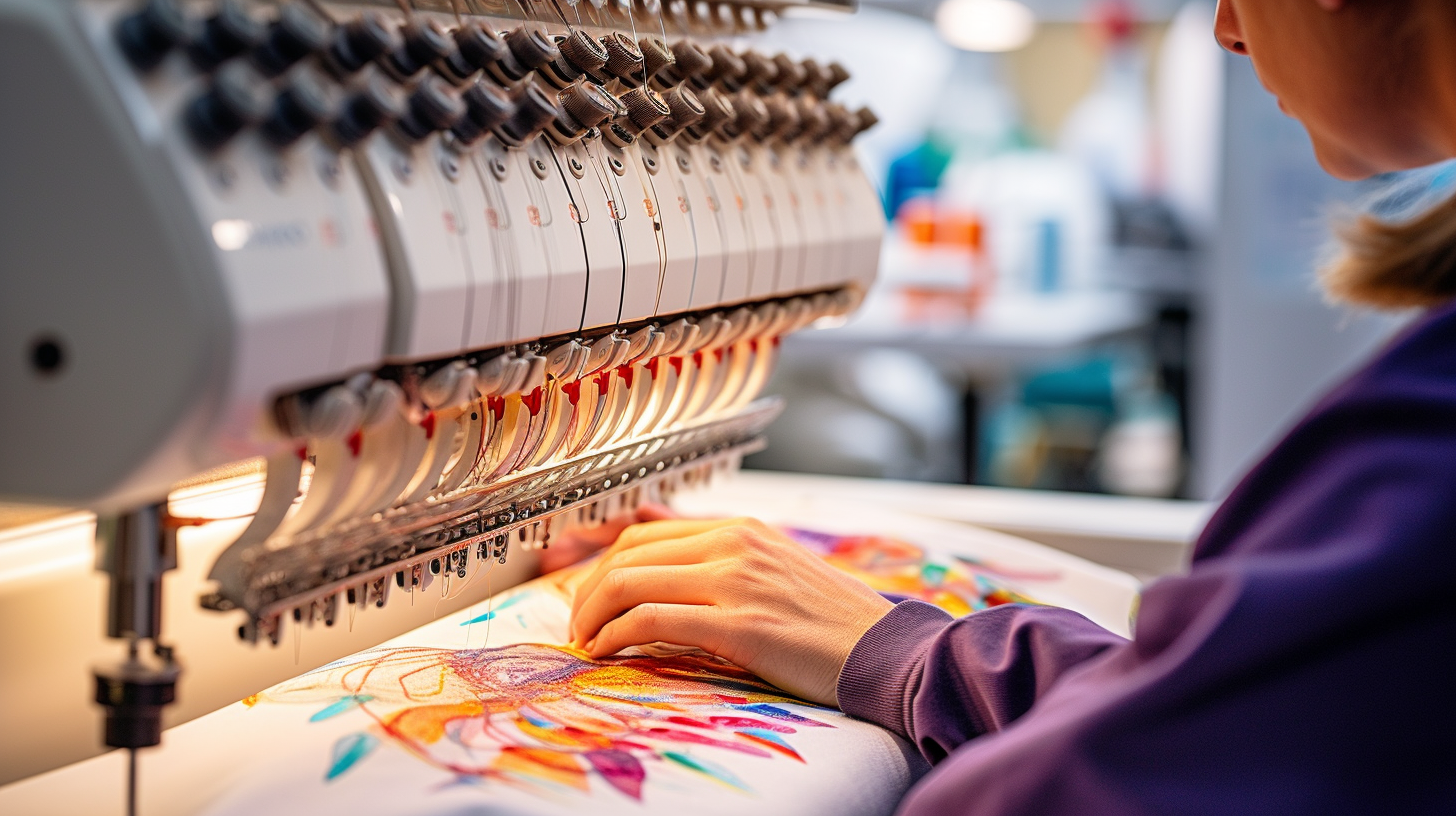Reliable Digitizing for Embroidery: Quick Turnaround
Reliable Digitizing for Embroidery: Quick Turnaround
Blog Article
Mastering the Embroidery Digitizing Refine: Your Ultimate Overview
Needlework digitizing is a thorough craft that needs precision and competence to convert intricate designs right into electronic styles for device embroidery. As artisans get started on this trip to grasp the needlework digitizing procedure, an extensive understanding of the fundamentals sets the foundation for excellence.

Understanding Embroidery Digitizing Basics
Needlework digitizing fundamentals develop the foundation upon which elaborate designs are converted right into machine-readable layouts for specific sewing. This initial action in the needlework digitizing procedure is vital for ensuring that the last embroidered item is a faithful depiction of the original layout. Comprehending needlework digitizing fundamentals entails comprehending vital principles such as stitch kinds, stitch direction, thickness, rug, and pull payment.
Stitch types play a crucial function in determining the visual and textural end result of the embroidered style. By selecting the ideal stitch kind, whether it be satin, fill, or running stitch, digitizers can attain the desired effect and improve the total top quality of the needlework. Additionally, sew direction influences the flow and dimension of the style, while thickness figures out the spacing and insurance coverage of the stitches.
In addition, padding stitching offers security to the style by safeguarding the fabric and stopping distortion throughout the embroidery procedure. Draw compensation is an additional crucial factor to consider to combat the natural tendency of textile to contract when stitched. Mastering these embroidery digitizing basics is essential for creating professional-quality stitched items.
Choosing the Right Digitizing Software Application
Choosing the ideal digitizing software program is a critical decision that considerably influences the efficiency and quality of the needlework digitizing process. Digitizing for Embroidery. When choosing the right digitizing software, it is important to think about factors such as the complexity of styles you plan to develop, the user-friendliness of the software program, the degree of consumer assistance supplied, and the compatibility with your needlework equipment
There are numerous digitizing software application options readily available out there, ranging from basic programs for beginners to advanced software for specialist digitizers. Some preferred options consist of Wilcom EmbroideryStudio, Hatch Embroidery Software Program, and PulseID. These software offer a vast array of devices and functions to aid you develop complex designs easily.
Before deciding, it is a good idea to discover the various software program choices via complimentary trials or trials to identify which one best suits your requirements. In addition, checking out evaluations and seeking recommendations from skilled digitizers can supply useful insights into the staminas and weaknesses of each software application plan (Digitizing for Embroidery). By carefully examining your demands and contrasting the functions of various digitizing software, you can make an enlightened option that boosts your embroidery digitizing process
Digitizing Devices and Methods

Optimizing Layout Setup for Embroidery
Understanding the ins and outs of style setups is fundamental in attaining optimal results in the needlework digitizing procedure, building upon the foundation laid by recognizing digitizing devices and techniques. When optimizing design setups for needlework, it is necessary to think about factors such as stitch type, thickness, underlay, draw settlement, and registration. Sew type selection impacts the total feel and look of the style, with alternatives like satin, fill, and running stitches providing different appearances and impacts. Density refers to the spacing and thickness of stitches, impacting the design's coverage and resilience. Appropriate rug stitching offers stability and stops fabric distortion, particularly for complicated styles or on elastic materials. Pull settlement changes for textile stretch throughout sewing, guaranteeing exact design duplication. Registration settings straighten different elements of the style precisely, preserving overall style honesty. By fine-tuning these style settings, embroiderers can enhance the top quality and precision of their embroidered creations.

Troubleshooting Common Digitizing Issues
When encountering usual digitizing concerns throughout the needlework process, it is necessary to recognize the origin causes and execute reliable services immediately. One typical trouble is stitch thickness issues, where stitches may be also dense, causing the material to tighten, or too sporadic, leading to spaces in the style. Changing the stitch density setups in the digitizing software program can help settle this problem.
Another regular challenge is thread breaks throughout investigate this site the embroidery procedure. This can happen as a result of numerous factors such as inaccurate tension settings, dull needles, or utilizing low-grade string. Making sure correct upkeep of the needlework machine, consisting of regular needle changes and tension changes, can lessen the incident of string breaks.
Additionally, design enrollment mistakes can lead to here are the findings misaligned components within the embroidery layout. Examining the design positioning in the digitizing software program and making essential adjustments prior to stitching can aid in avoiding this issue. By attending to these typical digitizing concerns immediately and effectively, you can make sure a smoother needlework procedure and high-grade finished items.
Verdict
In final thought, mastering the embroidery digitizing process needs a strong understanding of the essentials, the appropriate selection of software application, and knowledge of tools and strategies. Enhancing layout settings and repairing common digitizing issues are essential action in guaranteeing top quality needlework results. By following these actions diligently, one can accomplish precision and effectiveness in the digitizing procedure.
Report this page